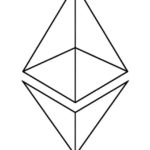The Future of Content Creation: Decentralization vs. Centralization
The TikTok controversy in the U.S. reveals more than just security concerns. It highlights the vulnerability of creators on centralized platforms. Millions rely on TikTok for visibility and income, but platform policies can shift, impacting their livelihoods.
YouTube’s ‘Adpocalypse’ in 2016-2017, Patreon’s fee changes in 2017, and Tumblr’s content updates in 2018 are examples of creators facing sudden policy alterations.Even Instagram’s algorithm changes affect content visibility wiht little transparency or user recourse.
Creators on centralized platforms often lack control over their content. Policies,algorithms,and monetization options change frequently,without input from creators. Decentralized platforms, however, offer a different path.
Decentralized platforms give creators more control over their content and management. Solutions like Arweave allow permanent storage, reducing dependence on centralized gatekeepers. This model increases resilience against censorship and opens new monetization opportunities.
For decentralized platforms to succeed, they must deliver practical improvements. User-friendly interfaces and scalable storage are essential. decentralization and free speech aren’t just ideals—they are practical foundations for lasting, creator-centric ecosystems.
The ongoing tiktok saga shows the risks of centralized platforms. For creators to thrive, a shift to decentralized systems is necessary. These systems, with well-designed storage options, can offer creators control over their content, distribution, and earnings.
At Odysee, we’re committed to empowering creators with genuine ownership. By integrating permanent storage networks like Arweave, we’re building








